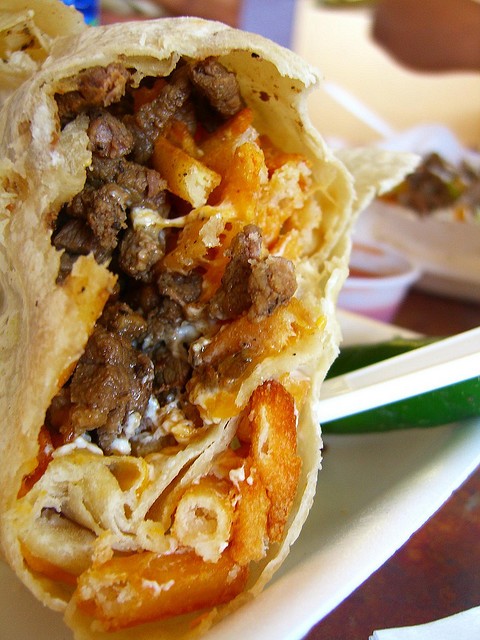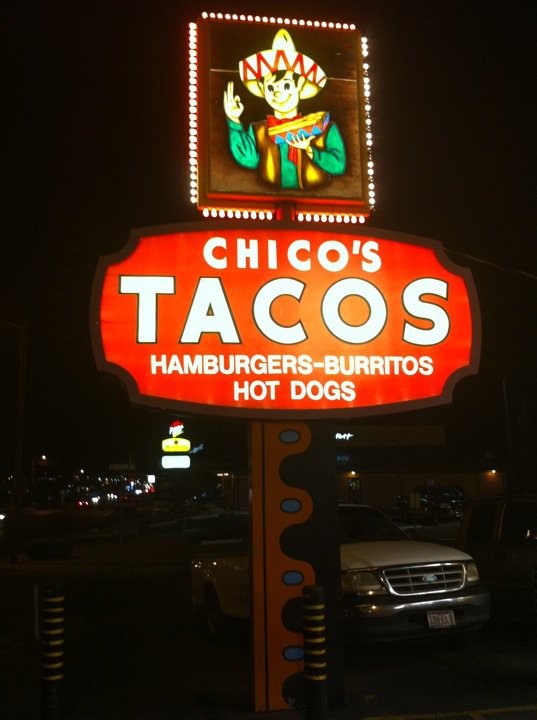
Rick Bayless came to and left Orange County last week, and none of Weeklings were able to attend, busy as we are with our normal lives (Dave, Edwin, and Shuji, their 9-to-5s; me, skinheads and pedo-priests). Sucks, because the battle between Bayless and Pulitzer Prize winner and LA Weekly food critic Jonathan Gold (which reached a denouement last week when Mr. Gold gave a tepid review to Bayless' Red O) has pushed me toward a political culinary position I never would've imagined: an Aztlanista approach to the question of what constitutes “authentic” Mexican cuisine.
Bayless, of course, is a legendary purist who recoils at the idea of nachos and burritos, much like his predecessor Diana Kennedy. They are the main advocates of lionizing certain parts of Mexico (Veracruz, Oaxaca) at the expense of others (Jalisco, Sonora, Sinaloa) as more “real” and pushing on el Norte what they claim is “authentic” Mexican, a revolution that has swept America in the past couple of decades and will play a major role in my much-promised book. This approach is also one many jingoistic Mexicans employ, especially when deriding gabachos or fast-food chains trying to cook what we think is their attempts at our beloved food.
I was one of them. Not anymore. Especially not with the dishes I will describe, all based in America but as ultimately authentically Mexican as the Chivas.
]
Gold's lecture–in which he deemed the Mexican-American food of Los Angeles no less authentic than Bayless' romanticized Veracruzan soups–had a lot to do with me reconsidering what exactly is Mexican food, what distinguishes “real” from “fake”, and why that matters. But so did a trip to the Hatch Chile Festival–and more on that in my book.
My stance.now, on the question of Mexican culinary authenticity is postmodern: every manifestation of Mexican food is “authentic.” No rhyme or reason needed: from the rarest Oaxacan mole, to a Taco Bell deluxe-whatever to the Kogi taco, all Mexican food that calls itself Mexican, that can trace some part of its heritage to meals that in one way or another originated in Mexico, is Mexican and authentic. How can it not be? Mexican food in all its manifestations is just a tasty extension of what the legendary Chicano scholar Américo Paredes once deemed “Greater Mexico”: the idea that Mexico and its culture doesn't stop at the border, that the evolution of Mexican-Americans and their own unique culture is as regionally a part of Mexico as tacos acorazados. Culinary purists like Bayless may howl, but they shouldn't: to laugh at the face of history and sociology is to be a fool.
Anyhoo, the pictures and my descriptions of five of the most authentic Mexican meals you can ever order, meals that will instill terror in the eyes of Baylessistas and cholesterol counts but must pass through your gullet once.
Double Order at Chico's Tacos, El Paso, Texas
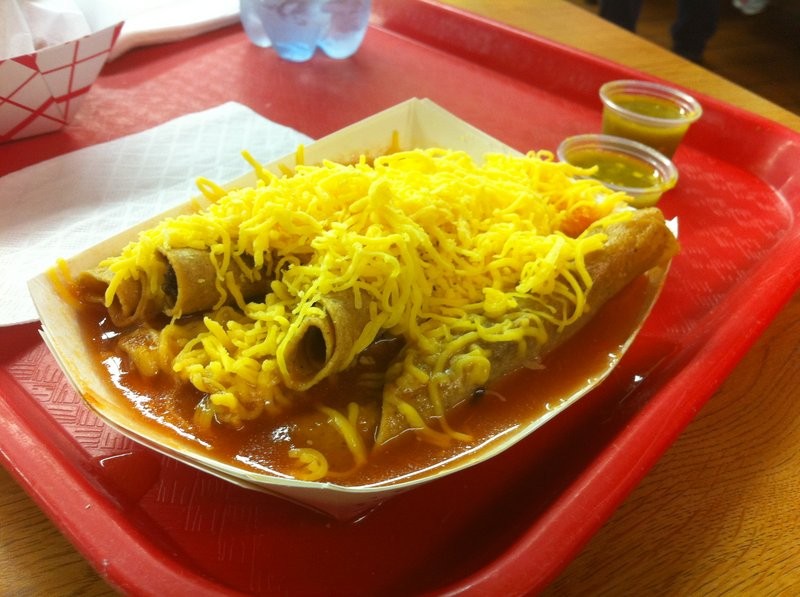
Behold the greatest indigenous Mexican dish to the United States: taquitos stuffed with beef, placed in what's essentially lightly spiced tomato soup, then buried underneath noodles of shredded yellow cheese that slowly melts into the broth, creating a goopy-greasy glory unknown to any other Mexican restaurant outside this legendary chain–and trust me, you can't get more Mexican in the most Mexican big-city in America in SanTana than this institution. El Pasoans don't even bother calling them taquitos: it's either a single order (three) or a double (six, as in the picture above).
The Puffy Tacos of San Antonio
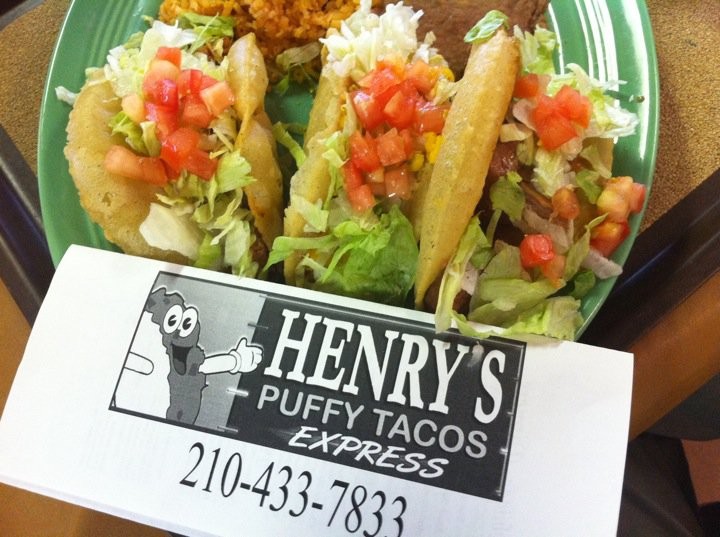
The picture above is from Henry's Puffy Tacos, the River City's most-famous purveyor of the dish, a fresh disc of masa flash-fried until the thing puffs up to create air
pockets, then bent and stuffed with meat (usually carne guisada or
picadillo), lettuce and a snowstorm of shredded cheese. I prefer the ones created by Ray's Drive-In, where the puffy taco supposedly first came to life. Their cousin is Arturo's Puffy Taco in Whittier.
Smothered Burrito, New Mexico
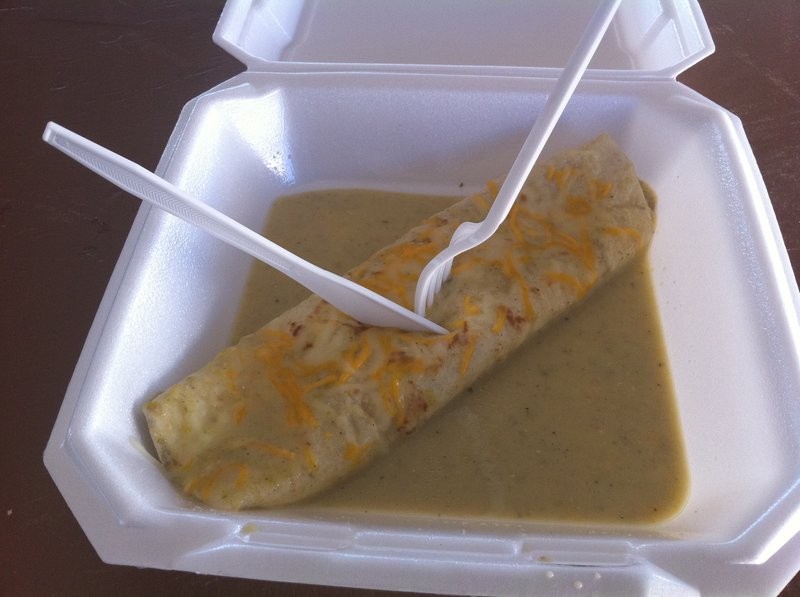
I never liked wet burritos–too big, the sauce is usually canned, and make the meal soggy, which I guess is the point but a soggy flour tortilla is as useful as a dry red velvet cupcake. Much smarter with their approach are the New Mexicans, whose smothered burrito is almost French in its care. They take a regular-sized burrito, place it in a plate already covered in the sauce of your choice (red or green), then melt a bit of cheese on top of the burrito, allowing you to “smother” the burrito according to your liking. This particular smothered burrito comes from a stand at the Hatch Chile Festival run by the local high school–hardly the epitome of a gourmet experience, but more fulfilling than any five-star restaurant can ever hope to create given that the green sauce came straight from freshly picked Big Jims.
Sonoran Hot Dog, El Güero Canelo, Tucson, Arizona
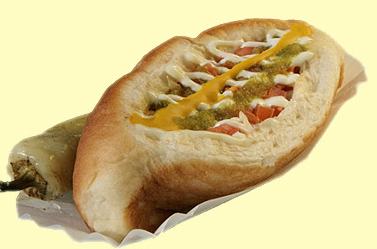
I'm sure gabachos wrapped bacon around franks before Mexis thought of it, but few dispute that it became an art form in Tucson, where they're known as Sonoran dogs because everyone there acknowledges that their preferred hot dogs crossed the border from that Mexican state. The king of the Sonora dog in the Old Pueblo is El Güero Canelo, which received praise from the New York Times in their article on the phenomenon. I've been to both locations; the original is hole-in-the-wall heaven, the newest as sleek as a Gulfstream hangar. In a region where flour tortillas are king and tortas a central Mexico myth, the Sonora dog is the taco of the region–and their gift to thousands of club-going Angelenos.
California Burrito, San Diego
